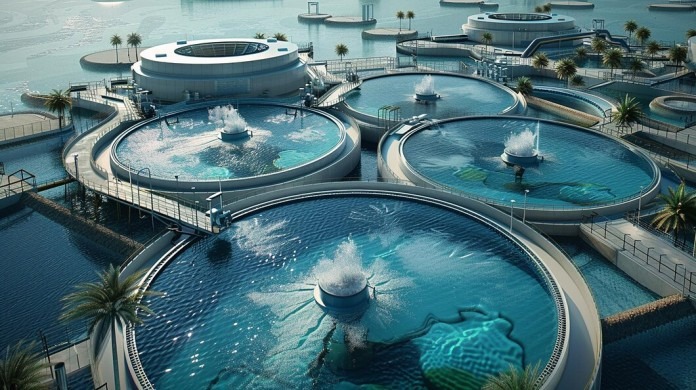The world is facing a growing water crisis, with increasing pollution, scarcity, and environmental degradation putting our precious water resources under strain. But technology is stepping in to change the game. One of the most promising innovations transforming water solutions today is 3D technology. From creating advanced filtration systems to enhancing marine conservation efforts, 3D technology is opening new doors for cleaner, more sustainable water management.
At 3dAqua, we’re committed to leveraging the power of 3D technology to bring smarter water solutions to life. In this article, we’ll dive into the key ways 3D technology is reshaping the future of water management.
1. Revolutionizing Water Filtration with 3D Printing
Water filtration is one of the most critical components of water management, but traditional filtration methods often fall short. 3D printing is changing the way we approach water purification, enabling the creation of custom-designed filters that are highly effective in removing pollutants, including microplastics, heavy metals, and bacteria.
Benefits:
- Customization: 3D printing allows for tailor-made filtration solutions based on specific water conditions, ensuring higher efficiency.
- Cost-Effective: 3D-printed filters can be produced at a lower cost, making them accessible for regions that need them the most.
- Sustainability: Unlike conventional filters that use mass-produced materials, 3D-printed filters are designed with sustainability in mind, reducing waste and resource consumption.
By using 3D printing, we’re able to target contaminants with precision, creating more efficient and affordable ways to deliver clean water to communities in need.
2. Smarter Aquatic Infrastructure with 3D Technology
Building resilient and sustainable infrastructure is key to ensuring the longevity of water systems. 3D modeling and 3D printing are revolutionizing the design and construction of aquatic infrastructure, including water treatment plants, pipelines, and underwater systems.
Key Advantages:
- Precision Design: 3D technology allows engineers to optimize the flow of water in different systems, reducing waste and maximizing efficiency.
- Cost Efficiency: 3D-printed components, such as underwater pumps and pipeline parts, can be manufactured with reduced labor and material costs.
- Longer Lifespan: By designing custom-made parts suited for specific environments, the infrastructure lasts longer and performs better.
This level of precision and cost-efficiency is essential for creating sustainable and resilient water systems that can meet the growing demands of populations and industries.
3. Enhancing Marine Conservation and Cleanup Efforts
Our oceans are facing a multitude of threats, including plastic pollution, overfishing, and habitat destruction. 3D technology is playing an increasingly important role in marine conservation and ocean cleanup efforts, offering solutions for preserving marine life and reducing waste in our waters.
Innovative Solutions:
- 3D-Printed Robots: These robots are designed to collect debris and monitor ocean conditions, aiding in the cleanup of plastic and other pollutants.
- Artificial Reefs: 3D-printed reefs are being used to restore damaged coral ecosystems. These structures mimic the natural coral habitat, providing shelter for marine life.
- Ocean Monitoring Tools: 3D-printed sensors and monitoring devices help track water quality and assess the health of underwater ecosystems.
By integrating 3D technology into marine conservation efforts, we can take more proactive steps toward restoring ocean health and reducing the impact of human activity on marine ecosystems.
4. Sustainable Aquaculture: Shaping the Future of Aquatic Farming
Aquaculture plays a crucial role in global food production, but traditional farming methods often create significant environmental impacts. With the help of 3D technology, sustainable aquaculture is becoming a reality, improving efficiency while minimizing harm to aquatic environments.
3D-Printed Innovations:
- Fish Tanks & Filtration Systems: Custom-designed tanks and filtration systems help improve water quality, reduce waste, and increase fish health.
- Vertical Aquaculture: 3D technology is enabling the development of vertical farming systems, which use less land and water compared to traditional aquaculture methods.
- Automated Feeding Systems: 3D-printed systems allow for precise control over feeding, reducing food waste and ensuring optimal fish health.
These advancements not only make aquaculture more efficient but also reduce the environmental footprint of farming, supporting the production of sustainable, healthy seafood.
5. The Future of Water Solutions: A Collaborative Effort
The integration of 3D technology in water management is still evolving, but its potential is already immense. Whether it’s through customized filtration systems, smarter infrastructure, or sustainable aquaculture, 3D technology is leading the way toward more sustainable and efficient water solutions.
At 3dAqua, we are dedicated to being part of this revolution by working alongside engineers, designers, and researchers to develop innovative solutions that will improve water access and quality worldwide.
Conclusion: A Water-Secure Future with 3D Technology
The future of water solutions lies in innovation, and 3D technology is at the forefront of this transformation. By utilizing this powerful tool, we can solve some of the most pressing water challenges of our time, from cleaning polluted water to restoring marine ecosystems and promoting sustainable food production.
At 3dAqua, we’re passionate about pushing the boundaries of aquatic innovation. We believe that by embracing 3D technology, we can build a water-secure future—one that is cleaner, more efficient, and more resilient for generations to come.

